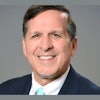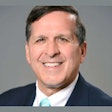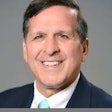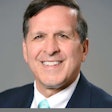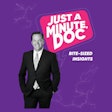The phenomenon is so common in dentistry that the phrase is part of dental vernacular. Some call it the hamster wheel. Others call it the treadmill. Burnout is how it feels, and it’s a scary place to reach. It affects your work, your home, and you. This is what happens when a practice becomes more successful than originally envisioned and the dentist finds him or herself running faster than they have strength.
It's also one of those moments in life and in business when it’s vital to look in the mirror and ask, “What must change?” Slowing down is an option by reducing the number of insurance contracts, as well as limiting new patient volume.
 Bob Spiel.
Bob Spiel.
For many, however, these steps only go so far, and the dentist finds themselves back in the same position a year or two later, running faster and faster while silently crying within, “I want my life back.”
One clear solution to this dilemma is to put your head down and assume this is how it’s always going to be. The better solution long term is to entertain the thought of bringing on an associate doctor to help carry the load.
In the military, they call this type of support person a “wingman,” a person who flies beside you, helping do what you can’t. In dentistry, we call the right person in this role an associate.
What are the telltale signs that indicate you’re ready for an associate? In more than 15 years of helping doctors in this very situation get their life back, we have found there are seven signs an associate doctor should be a part of your future:
- Greater emotional stress. As mentioned already, this is the first indicator. I’m not talking about occasional stress, but the underlying feeling that you are being stretched too thin.
- Drive-by dentistry. With the dynamic of being stretched too thin, a common reaction is what we call “drive-by dentistry.” This is when providers are so busy, they see new treatment in hygiene, for instance, and have this subconscious dialogue, “Is it worth the discussion, or do I wait six months or 12 months until it gets a little bit worse? I really don't have room in my schedule to treat it anyway, so let’s just hold off.”
- Plateaued dentist production levels. At this stage of the game, dentist production levels begin to plateau. The only way out of this is to work more hours or to begin to work 4 1/2 to five days a week … which is a sure formula for physical burnout.
- Being booked out too far. Another indicator an associate is needed is when the dentist’s schedule begins to be booked one or two months in advance … and often new patients are even further out than that. This indicates a capacity issue, as the dentist is now becoming the bottleneck for growth.
- Feeling like you are going through the motions. By this time, providers start to feel like they’re going through the motions and often resent their career choice. Even the joy of a restoration well done begins to be lost as the hamster wheel seems unending.
- Greater unscheduled treatment. Very high levels of unscheduled treatment are another clear indicator that a doctor is at capacity. If he or she is still producing at stretched-thin levels, but monthly unscheduled treatment is equal to double their monthly production, patients aren't being taken care of, and you have what we call “a practice within a practice.”
- The patient revolving door. The final phenomenon we observe is the patient revolving door. This means patients are being lost equal to or greater than new patients are being attracted. This loss can come from many reasons, but the key factor is not enough provider hours to take care of patient needs.
If you are experiencing more than half of these symptoms, the positive news is you are in great company, as 99% of successful dentists reach this “boiling point.” Navigating this successfully can lead to more patients, better care, more wealth, and more freedom. Navigating it unsuccessfuly, however, only leads to compounding problems when the wrong associate is brought on board. We have found over the years, making the wrong hire is worse than making no hire, because you now not only have one problem, you have two.
There are solutions to hiring smarter. Stay tuned as we share in our next article principles and tools we’ve learned over the last 15 years of hiring associates that have transformed the industry’s 75% associate hire failure rate to an 85% success rate.
Editor's note: Watch below as Bob Spiel is joined by DrBicuspid.com Editor-in-Chief Kevin Henry and Bryton Nield, CEO of Dentist Partner Pros, to not only discuss the article but the good and bad that can occur when hiring an associate for your practice.
Bob Spiel’s mission is building high-performance practices that deliver exceptional service while doing more, in less time with less stress. His firms, Dentist Partner Pros and Spiel Consulting, intend to transform general and specialty practices by building leaders at all levels. He has been consulting, speaking and coaching dentists and their teams for almost two decades. He is co-host of the Just Say No to the DSO podcast and a faculty member for Dr. Gordon Christensen.
The comments and observations expressed herein do not necessarily reflect the opinions of DrBicuspid.com, nor should they be construed as an endorsement or admonishment of any particular idea, vendor, or organization.




